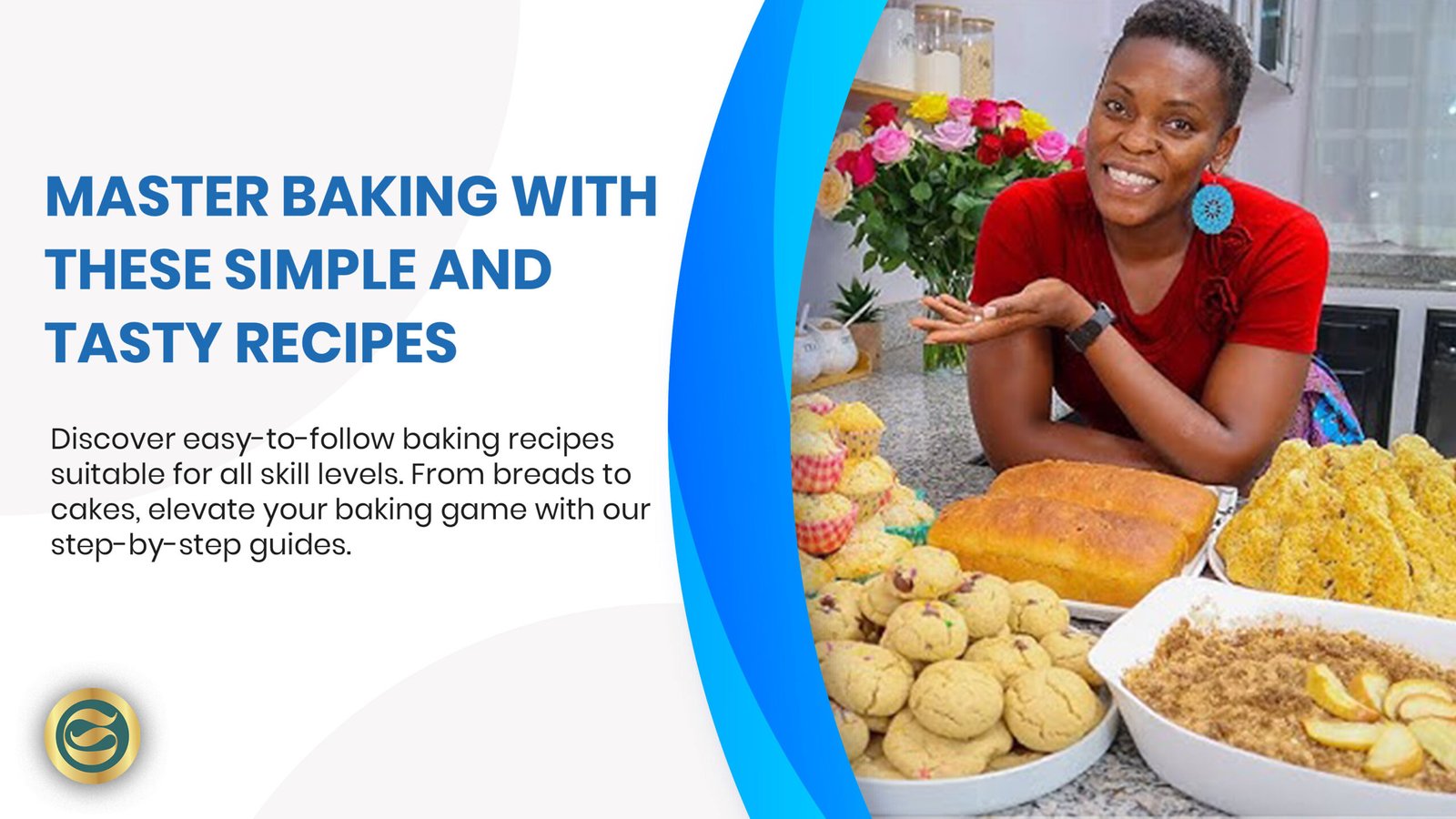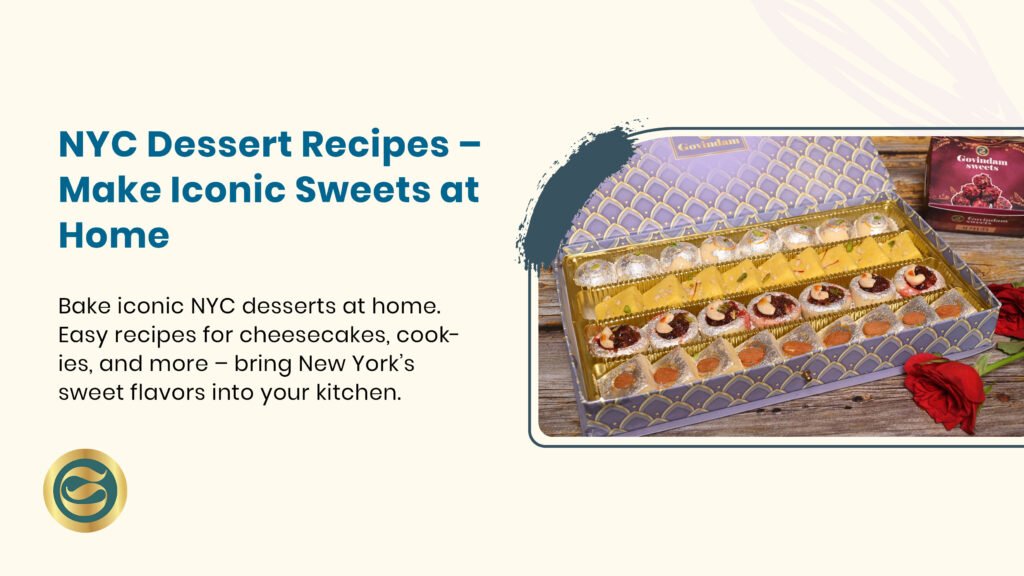
Posts
Mastering Art Science Traditional Indian Sweets Govindam Techniques

Discover Indian Sweets Govindam’s secret artisan techniques including traditional preparation methods, ingredient science, expert craftsmanship, and generational knowledge creating authentic excellence. Explore why Govindam’s specialized expertise, quality commitment, and cultural authenticity deliver superior traditional sweets that home preparation rarely achieves through professional dedication.
Indian Sweets Govindam: 7 Secret Artisan Techniques Revealed
Introduction: Govindam’s Art and Science of Traditional Excellence
Indian Sweets Govindam represents the pinnacle where traditional artisan craftsmanship meets generations of refined expertise—revealing the secret techniques, quality commitments, and specialized knowledge that distinguish authentic excellence from ordinary alternatives. Understanding how Govindam Sweets creates superior traditional preparations requires appreciating both the tangible technical elements (precise temperature management, sugar chemistry applications, milk protein manipulation) and the intangible mastery dimensions (sensory judgment development, timing intuition cultivation, quality assessment expertise) that decades of focused practice develop. This comprehensive exploration reveals Govindam’s 7 secret artisan techniques demonstrating why authentic traditional Indian sweets from Govindam deliver consistent excellence that casual home preparation cannot replicate despite genuine effort and quality ingredient access.
The complexity of professional mithai preparation at Govindam Sweets transcends simple recipes into authentic cultural expressions requiring dedicated expertise, patient practice, and generational knowledge transmission. What appears straightforward when observing master artisans at Govindam actually involves countless subtle judgments, timing precision, ingredient quality discernment, and technique refinements that years or decades of focused practice develop—creating consistent excellence distinguishing authentic Govindam Indian sweets from approximations lacking proper execution or cultural understanding that genuine mastery requires.
At Govindam Sweets, our decades maintaining authentic Rajasthani sweet traditions including technically demanding Ghewar preparations and refined Balwan Laddu represent living continuation of artisan expertise that generations refined through dedicated practice, cultural immersion, and quality commitment transcending commercial transaction into cultural stewardship responsibilities…
Traditional Preparation Methods: Beyond Simple Recipes
The Khoya/Mawa Foundation: Milk Alchemy
The Process: Perhaps most fundamental traditional technique involves milk reduction creating khoya (also called mawa)—concentrated milk solids forming base for countless North Indian sweets. The seemingly simple process of slowly simmering full-fat milk while continuously stirring until water evaporates leaving thick paste actually requires substantial skill, patience, and judgment:
Technical Requirements:
- Heat Management: Maintaining proper temperature—high enough for efficient reduction but low enough preventing scorching that ruins batch instantly through burnt flavor and appearance damage
- Continuous Attention: Constant stirring preventing milk solids adhering to pan bottom where they burn, requiring patient dedication throughout hours-long process
- Endpoint Recognition: Knowing exact moment when khoya reaches proper consistency—too wet remains unstable and difficult working with, too dry becomes crumbly and unworkable
- Quality Preservation: Managing reduction process preserving milk’s natural sweetness and avoiding caramelization browning that some preparations don’t want
The Science: Milk contains approximately 87% water—reduction concentrates proteins (casein), fats, lactose (milk sugar), and minerals while driving off liquid creating shelf-stable ingredient with different textural and flavor characteristics than liquid milk. The Maillard reactions (protein-sugar interactions) occurring during heating create flavor complexity and light color development that controlled management optimizes while preventing excessive browning that burnt characteristics create.
Why Professional Matters: Commercial khoya-makers and traditional vendors possess experience recognizing subtle visual and textural cues indicating proper reduction, understand heat adjustment needs as consistency changes, and maintain systematic attention throughout lengthy process that home cooks often struggle sustaining given competing domestic demands and limited practice developing intuitive judgment that experienced artisans apply automatically.
Home Consideration: While khoya-making remains technically possible at home, the time investment (2-3+ hours for reasonable quantity), attention requirement, risk of costly ingredient waste through scorching, and availability of commercial khoya in areas with Indian grocery access make home preparation impractical for most contexts unless undertaken as learning experience rather than efficient ingredient sourcing.
Sugar Syrup Mastery: Chemistry in Action
Thread Stages and Crystallization Control:
Traditional Indian sweet-making extensively employs sugar syrup at various concentration levels creating different textures and characteristics:
The Concentration Spectrum:
- One-Thread (Ek Taar): Light syrup for soaking preparations
- Two-Thread (Do Taar): Medium consistency for many sweets
- Soft Ball: Pliable fudge consistency when cooled
- Hard Ball: Firmer candy textures
- Hard Crack: Brittle preparation applications
Testing Without Thermometers: Traditional knowledge developed empirical tests determining syrup concentration without modern equipment:
- Thread Test: Dipping fingers in cold water then quickly in syrup and pulling fingers apart forms visible threads indicating concentration level
- Water Drop Test: Dropping syrup into cold water and observing ball firmness or dispersal pattern
- Visual Cues: Bubble size, surface appearance, and boiling pattern changes indicating concentration progress
Crystallization Management: Controlling whether sugar crystallizes (desired for certain preparations) or remains smooth (needed for others) involves understanding factors affecting crystal formation:
- Interference Agents: Adding lemon juice, cream of tartar, or glucose prevents crystallization through chemical interference
- Agitation Timing: Stirring during cooling encourages crystallization, avoiding movement maintains smoothness
- Seeding: Introducing sugar crystals triggers controlled crystallization
- Temperature Control: Managing cooling rates affects crystal size and texture
Why Professional Matters: Sugar chemistry demands precise control and experience-based judgment—professionals understand how humidity, ingredient variations, and altitude affect syrup behavior, recognize subtle indicators determining proper concentration, and apply corrective actions when unexpected behaviors emerge that recipes cannot fully anticipate or instructions adequately address without situational judgment.
Deep Frying Expertise: Temperature and Timing
Traditional Fried Sweets: Preparations like jalebi, gulab jamun, balushahi, and particularly Ghewar require masterful frying technique:
Critical Variables:
- Oil Temperature: Precise heat levels—too cool creates oil-soaked greasy results, too hot produces burnt exteriors with raw interiors
- Batter/Dough Consistency: Proper hydration and texture affecting frying behavior and final characteristics
- Timing Precision: Knowing exact moment for turning, removing, or temperature adjustments
- Oil Quality: Fresh clean oil versus degraded oil affecting flavor and potential health concerns
- Quantity Management: Avoiding overcrowding that drops temperature or creates uneven cooking
The Ghewar Challenge: Our signature Ghewar represents perhaps Indian sweet-making’s most technically demanding fried preparation:
Unique Requirements:
- Specialized Batter: Exact flour blend, liquid ratio, and fermentation creating proper bubble formation
- Pouring Technique: Rhythmic controlled pouring from height creating characteristic honeycomb structure
- Oil Temperature Precision: Narrow acceptable range enabling bubble formation without batter cooking too rapidly
- Environmental Factors: Humidity and temperature affecting batter behavior—monsoon humidity facilitates proper ghewar preparation explaining seasonal tradition
- Pan Selection: Specific vessel shape and material affecting heat distribution and structural development
Why Professional Matters: Ghewar particularly demonstrates why artisan expertise matters—attempted without proper training, technique refinement, and atmospheric understanding rarely produces acceptable results. Our artisans’ years of dedicated practice create muscle memory, sensory judgment, and problem-solving capabilities that instructions alone cannot convey adequately for successful replication.
Stovetop Sweets: Patience and Precision
Barfi, Halwa, and Continuous-Cooking Preparations:
Many beloved sweets require patient stovetop cooking with continuous stirring:
Common Challenges:
- Scorching Prevention: Constant attention preventing mixture sticking and burning
- Proper Cooking Endpoint: Recognizing exact moment when mixture reaches proper consistency—continuing creates hard dry results, stopping early produces soft unstable preparations
- Ghee Integration: Proper fat incorporation creating smooth texture without separation or greasiness
- Working Time: Managing cooling period when mixture remains pliable before hardening requires swift shaping and cutting
Besan-Based Sweets: Preparations using gram flour (besan) like mohanthal, besan barfi, and Balwan Laddu components demonstrate additional complexity:
Roasting Requirements:
- Color Development: Achieving golden roasted color without burning creates characteristic flavor
- Aroma Recognition: Knowing when distinctive nutty fragrance signals proper roasting completion
- Texture Transformation: Understanding how raw grainy texture converts to smooth roasted consistency
- Fat Balance: Managing ghee quantity creating proper richness without excessive greasiness
Why Professional Matters: The repetitive nature of professional preparation builds sensory memory and timing intuition—artisans recognize subtle smell, appearance, and sound cues indicating status and needed adjustments that novices miss lacking reference library of proper outcomes across varying conditions.
Ingredient Science and Quality Impact
The Ghee Question: Why Purity Matters
Clarified Butter’s Role:
Pure ghee serves multiple critical functions in traditional sweets:
Flavor Contribution: Distinctive rich taste that defines authentic traditional character—substitutes using vegetable oils or vanaspati (hydrogenated vegetable fat) lack authentic flavor profile regardless of technical similarity
Texture Effects: Proper fat structure affecting mouthfeel, melting properties, and overall sensory experience—different fats create different textural characteristics
Preservation Properties: Traditional antimicrobial effects enabling room-temperature storage that milk-based sweets otherwise couldn’t tolerate without refrigeration
Cultural Authenticity: Traditional expectations and cultural significance meaning authentic preparations use proper ingredients regardless of modern alternatives’ cost advantages or shelf-life benefits
Quality Variations: Not all ghee proves equal:
- Pure Cow Ghee: Traditional standard with characteristic flavor
- Buffalo Ghee: Richer stronger flavor and higher fat content
- Adulterated Products: Commercial ghee sometimes mixed with cheaper oils reducing authenticity and affecting results
- Preparation Method: Traditional hand-churned versus industrial production creating subtle quality differences
Home Challenges: Quality ghee remains expensive—proper traditional sweet-making requires substantial quantities creating significant ingredient investment. Commercial vendors’ bulk purchasing and supplier relationships enable better cost management than retail consumer pricing allows.
Milk Matters: Fresh vs. Powder
Reconstituted vs. Real:
Some commercial operations substitute milk powder for fresh milk reducing costs and enabling longer storage:
Fresh Milk Advantages:
- Superior Flavor: Natural dairy taste that powder cannot fully replicate
- Better Texture: Protein and fat structure affecting final preparation characteristics
- Authentic Character: Traditional preparations assumed fresh milk creating expectations that substitutions don’t fully satisfy
- Nutritional Superiority: Minimal processing preserving natural nutrients and beneficial compounds
Detection Difficulty: Consumers often cannot easily identify milk powder usage in finished products—appearance and texture might seem acceptable though discerning taste reveals differences that knowledgeable consumers recognize as quality compromises.
Professional Standards: Authentic traditional vendors like Govindam prioritize fresh quality milk despite higher costs and logistical complexity—quality commitment and cultural authenticity taking precedence over cost optimization through ingredient substitution.
Nut and Dry Fruit Quality
Grade Variations:
Premium sweets incorporate substantial nuts and dry fruits:
Quality Spectrum:
- Whole Premium: Large intact pieces with best appearance and flavor
- Broken Pieces: Fragments or smaller grades reducing cost but affecting presentation
- Old Stock: Aged nuts showing rancidity or staleness compromising taste
- Substitution: Using cheaper alternatives (cashew fragments instead of whole almonds) reducing quality
Processing Matters:
- Blanching Quality: Proper skin removal without kernel damage
- Roasting Level: Appropriate toasting enhancing flavor without burning
- Storage Conditions: Proper handling preventing rancidity and staleness
Cost-Quality Relationship: High-quality nuts represent major expense in premium preparations—authentic vendors maintaining quality standards despite cost pressure while budget operations sometimes compromise through inferior grades or reduced quantities that pricing reflects but casual observation might not detect immediately.
Sweetener Choices and Sugar Quality
Refined White vs. Traditional Alternatives:
Jaggery (Gur): Unrefined cane sugar retaining minerals and distinctive flavor—some traditional preparations specifically employ jaggery creating characteristic taste that white sugar preparations lack
Sugar Quality Grades: Even refined sugar varies—impurities, grain size, and processing affecting clarity, crystallization behavior, and subtle flavor impacts
Honey Applications: Traditional recipes sometimes incorporated honey before widespread sugar availability—honey’s enzymatic properties, moisture content, and distinct flavor creating different characteristics requiring recipe adaptations
Balance Considerations: Sweetness level represents subjective preference and cultural variation—proper traditional balance creates satisfaction without overwhelming intensity or cloying aftertaste that excessive sugar produces
Cultural Knowledge and Contextual Understanding
Seasonal Appropriateness and Traditional Timing
Monsoon Sweets: Ghewar’s seasonal association with monsoon and Teej festival isn’t arbitrary—atmospheric humidity during monsoon months facilitates proper batter bubble formation creating characteristic structure. Attempting ghewar preparation during dry weather often produces disappointing results lacking proper honeycomb development.
Winter Preparations: Til (sesame) based sweets concentrate in winter months reflecting both Ayurvedic warming properties and festival timing (Makar Sankranti in January). The rich dense character suits cold weather when substantial foods provide comfort and warming.
Festival Connections: Specific preparations become inseparably linked with festivals—Diwali’s variety requirements, Holi’s gujiya/ghughra, Janmashtami’s emphasis on certain preparations all reflect cultural knowledge about appropriate selections that recipes alone don’t convey without cultural embedding.
Regional Authenticity and Geographic Specificity
Rajasthani Distinctiveness: Our authentic Rajasthani specialties reflect desert geography, royal heritage, and cultural traditions creating distinctive character:
Desert Adaptations: Heavy ghee usage providing preservation and richness, preparations withstanding heat without refrigeration, ingredient selections maximizing limited agricultural resources
Royal Influence: Elaborate preparations and premium ingredients reflecting court patronage and celebration sophistication
Cultural Pride: Community validation and traditional knowledge maintenance ensuring authentic character versus generic “Rajasthani-style” approximations lacking genuine cultural credentials
Occasion Appropriateness and Social Context
Religious Ceremonies: Certain preparations carry specific religious significance—prasad offerings, ritual consumption, festival requirements all involve cultural knowledge about appropriate selections that ingredient lists alone don’t communicate
Celebration Hierarchy: Understanding which preparations suit different occasion scales—everyday, special occasions, major celebrations, or once-in-lifetime events each warrant different sweet selections and investment levels
Gifting Protocols: Cultural knowledge about appropriate gifts for specific relationships, occasions, and contexts that recipes don’t address but traditional vendors’ cultural embedding naturally understands
Simple Educational Recipes: Understanding Through Practice
Disclaimer and Realistic Expectations
Before exploring simplified home versions, honest acknowledgment: these represent basic educational approximations enabling appreciation rather than replicating authentic traditional excellence that professional artisan preparation achieves. Quality ingredients, proper technique, and patient practice remain essential—shortcuts or substitutions compromise results creating disappointment that ingredient quality and preparation care would prevent.
Recommendation: Use these as learning experiences understanding preparation complexity, then appreciate and purchase authentic excellence from Govindam for genuine traditional quality that home attempts rarely match.
Educational Recipe #1: Simple Besan Laddu
Understanding Purpose: Demonstrates gram flour roasting, ghee integration, and shaping technique while remaining achievable with care and attention.
Ingredients:
- 2 cups gram flour (besan), best quality available
- 1 cup pure ghee
- 1 cup powdered sugar (or to taste)
- 1/4 tsp cardamom powder
- 2 tablespoons chopped nuts (almonds, cashews)
Method:
- Roasting Foundation: Heat heavy-bottom pan on medium-low. Add ghee and gram flour, stirring continuously. This step requires patience (15-20 minutes) until flour turns golden and releases nutty aroma. Rushing causes burning; inadequate roasting creates raw taste.
- Cooling Phase: Remove from heat, continue stirring as mixture cools preventing lumps. When warm (not hot—test carefully), add sugar and cardamom mixing thoroughly.
- Shaping: While mixture remains workable, shape into golf-ball sized spheres pressing firmly so they hold together. If too dry to bind, warm slightly and add small amounts of ghee; if too soft, allow further cooling.
Learning Points:
- Recognize proper roasting through color and aroma development
- Experience working with temperature-sensitive mixtures requiring timing precision
- Understand ghee quantity’s role in binding and richness
- Appreciate how quality ingredients affect final taste
Reality Check: Home versions rarely match professional quality—commercial operations’ systematic processes, experienced artisans’ judgment, and quality ingredient sourcing create superior consistency and character. Try this educational recipe, then compare with authentic Balwan Laddu from Govindam experiencing difference between home attempt and professional excellence.
Educational Recipe #2: Basic Milk Barfi
Understanding Purpose: Introduces milk reduction principles, sugar crystallization control, and setting technique.
Ingredients:
- 1 liter full-fat milk
- 1/2 cup sugar
- 2 tablespoons ghee
- 1/4 tsp cardamom powder
- Nuts for garnish
Method:
- Milk Reduction: In heavy-bottom pan, bring milk to boil then reduce heat to medium. Simmer stirring frequently until milk reduces by half (30-40 minutes), scraping sides preventing waste and ensuring even reduction.
- Sugar Addition: When milk substantially thickens, add sugar and ghee. Continue cooking and stirring until mixture leaves pan sides and forms mass (another 15-20 minutes).
- Setting: Pour into greased plate, flatten to 1/2 inch thickness, garnish with nuts pressing gently. Cool completely before cutting.
Learning Points:
- Understand milk reduction patience requirements and attention needs
- Experience timing judgment determining proper cooking endpoints
- Recognize how sugar affects texture and crystallization
- Learn setting and cutting techniques for fudge-style preparations
Reality Check: Professional barfi demonstrates superior smoothness, proper sweetness balance, and consistent texture that home versions struggle achieving—our Rajasthani barfi collection represents authentic excellence that proper equipment, quality ingredients, and artisan expertise create beyond typical home capabilities.
Why Professional Preparation Excels
Systematic Quality Control: Commercial operations maintain batch consistency through standardized processes, quality checkpoints, and systematic monitoring that home cooking’s variable conditions don’t match.
Experience-Based Judgment: Daily practice develops intuitive recognition of proper endpoints, needed adjustments, and problem corrections that occasional home cooking cannot cultivate regardless of recipe adherence.
Equipment Advantages: Proper commercial equipment—heavy-duty cookware, temperature-controlled environments, specialized tools—enables control and results that home kitchens’ limited equipment struggles replicating.
Ingredient Access: Bulk purchasing, supplier relationships, and professional sourcing enable quality ingredient access at viable costs that retail consumer pricing makes prohibitively expensive for equivalent quality levels.
Time Economics: Professional focus enables efficient production that home cooks balancing multiple domestic demands cannot match—what requires hours of undivided home attention becomes integrated into systematic commercial workflows managing multiple preparations simultaneously.
When to Make vs. When to Buy
Appropriate Home Sweet-Making Contexts
Educational Exploration: Learning about preparation methods, building appreciation for complexity, and developing respect for artisan expertise through hands-on experience
Simple Preparations: Basic recipes within reasonable skill and time investment offering genuine satisfaction despite not matching professional quality
Cultural Connection: Family traditions involving intergenerational preparation sharing, cultural knowledge transmission, and relationship building through shared cooking
Special Ingredient Access: Unique local ingredients or family recipe variations creating distinctive preparations that commercial operations don’t offer
Personal Satisfaction: Enjoyment from creative process and accomplishment sense that successful preparation provides regardless of objective quality comparison
When Professional Artisan Preparation Provides Superior Value
Important Occasions: Weddings, major festivals, significant celebrations warranting quality excellence and reliable consistency that professional preparation ensures
Authentic Regional Specialties: Preparations requiring specialized expertise like Ghewar where technical complexity and cultural knowledge create success barriers for casual home attempts
Quantity Needs: Bulk requirements for events or distributions where home production scale becomes impractical and commercial efficiency provides better solutions
Time Constraints: Busy lifestyles lacking hours of focused attention that traditional preparation demands making professional sourcing practical time management
Quality Consistency: When reliable excellence matters more than personal involvement—professional systematic processes ensure predictable quality that variable home conditions might not guarantee
Complex Techniques: Advanced preparations involving multiple steps, precise timing, or specialized skills that experience and training develop beyond casual home cooking capabilities
The Govindam Difference: Artisan Excellence
Generational Expertise and Cultural Authenticity
Our authentic Rajasthani specializations represent living heritage through:
Family Knowledge Transmission: Techniques, recipes, and quality standards passed across generations creating institutional expertise that recent operations cannot instantly replicate
Cultural Embedding: Deep understanding of regional traditions, seasonal appropriateness, and cultural contexts that generic vendors lack despite product availability
Community Validation: Local Rajasthani patronage confirming authentic quality—when community members whose tradition we represent validate excellence, broader audiences gain confidence in genuine authenticity
Systematic Quality Commitment
Ingredient Standards: Uncompromising quality specifications refusing substitutions despite cost pressures—pure ghee, fresh milk, premium nuts, proper flours creating authentic character
Preparation Excellence: Expert artisan execution maintaining traditional techniques, appropriate timing, and quality consciousness throughout production
Consistency Management: Systematic processes and batch monitoring ensuring reliable quality across time and production volumes rather than variable results
Freshness Protocols: Production scheduling and inventory management optimizing quality when customers receive products versus aged stock showing degradation
Specialized Focus and Authentic Expertise
Regional Specialization: Focused excellence in Rajasthani traditions rather than superficial breadth claiming inappropriate universal expertise across all Indian sweet categories
Technical Mastery: Particularly demanding preparations like Ghewar showcasing genuine technical excellence and preparation difficulty that casual operations avoid
Cultural Knowledge: Understanding appropriate usage contexts, seasonal timing, festival associations, and traditional significance that recipes alone don’t convey
Transparent Communication: Honest positioning about our authentic expertise areas versus acknowledging supplementary offerings without misleading capability claims
Conclusion: Appreciating Artisan Excellence
Understanding traditional Indian sweet-making’s complexity builds appreciation for authentic artisan preparation representing centuries of refined knowledge, specialized technique mastery, and cultural wisdom that casual home attempts rarely replicate despite genuine effort and quality ingredient access. The education about preparation methods, ingredient science, technique requirements, and cultural knowledge serves not to discourage exploration but to contextualize authentic excellence—recognizing that certain preparations particularly benefit from professional artisan specialization maintaining traditional standards through dedicated practice, generational expertise, and quality commitments that commercial success enables supporting rather than compromising through growth or efficiency pressures.
The wisest approach appreciates both realms: occasional simple home sweet-making for educational value, cultural connection, and personal satisfaction where process matters as much as product; while relying on authentic traditional vendors like Govindam Sweets for genuine regional specialties, important occasions, and consistent quality needs where professional excellence justifies investment through reliable satisfaction and authentic traditional character that experience and specialization create. The “art and science” of traditional sweets ultimately reflects human knowledge accumulation and craft dedication that respecting through conscious patronage of authentic artisans ensures future preservation connecting contemporary consumers to ancestral wisdom while supporting living traditions through economic sustainability enabling artisan livelihoods and intergenerational knowledge continuation.
Experience authentic traditional excellence through Govindam’s specialized offerings—discover how professional artisan preparation delivers consistent quality, authentic regional character, and genuine traditional excellence that home attempts rarely achieve. Whether exploring signature specialties like Balwan Laddu, seasonal Ghewar preparations, or comprehensive traditional collections, professional quality reflects dedication, expertise, and cultural authenticity that decades of focused practice create—where appreciation for preparation complexity enhances rather than diminishes enjoyment, where understanding artisan skill justifies quality investment, and where conscious support for authentic traditional vendors ensures heritage preservation through economic viability enabling continued excellence serving future generations who deserve experiencing genuine regional specialties prepared with expertise, cultural knowledge, and quality commitment that artisan dedication faithfully maintains across time honoring tradition while serving contemporary needs through accessible excellence balancing heritage authenticity with modern convenience.


